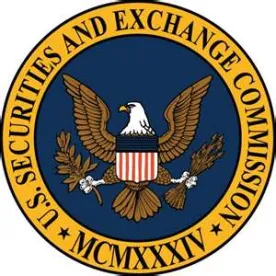The SEC brought a record number of cases in 2015, many of which the Commission touted as “high impact” and “first-of-their-kind,” and FINRA increased its enforcement total, tripling the amount of restitution to be paid to investors.
This article highlights key US Securities and Exchange Commission (SEC) and Financial Industry Regulatory Authority (FINRA) enforcement developments and cases regarding broker-dealers, investment advisers, investment companies, and their employees during fiscal year 2015. The 2015 publication of the Year in Review marks the 10th anniversary of the firm’s issuance of an outline describing the key SEC and FINRA enforcement statistics, developments, and cases.
The SEC
There were few significant personnel changes at the SEC last year. The Commission’s composition remained unchanged in fiscal year 2015, with Chair Mary Jo White continuing to lead the SEC, joined by Commissioners Luis A. Aguilar, Daniel M. Gallagher, Kara M. Stein, and Michael S. Piwowar. Shortly following the end of the fiscal year, Commissioner Gallagher departed, followed by Commissioner Aguilar at calendar year end, each having waited in vain for their replacements to be confirmed by the US Senate.
The enforcement statistics compiled by the SEC during fiscal year 2015 (which ran from October 1, 2014 through September 30, 2015) set several records. Once again this last year, the SEC highlighted what it called “high impact” and “first-of-their-kind” actions, and the agency claims to be already “paving new ground” in fiscal year 2016.
In fiscal year 2015, the SEC brought a record 807 cases, which, according to the SEC, were composed of 507 independent actions and 300 actions against issuers that were delinquent in making required filings or “follow on” administrative proceedings seeking bars against individuals. Moreover, the SEC’s actions again resulted in a record tally of monetary sanctions being imposed against defendants and respondents.
In fiscal year 2015, the SEC obtained orders requiring the payment of $4.19 billion in penalties and disgorgement, which is a less than 1% increase from the amounts ordered in fiscal year 2014, but still a record for the Commission.
In what has become a trend, the SEC brought 3% fewer cases against investment advisers and investment companies¾126 cases in 2015 compared to 130 actions in 2014. And actions against broker-dealers were down to 124 from last year’s 166, suggesting that the surge in broker-dealer actions brought in 2014 was a one-time event. Although the SEC continued to devote significant resources to investigating regulated entities, cases in these areas have dropped to approximately 31% of the total caseload in 2015, down from about 39% in the two prior fiscal years. Notably, the Municipal Securities and Public Pensions cases made up nearly 10% of the Commission’s docket in 2015, an increase likely attributable, in large part, to the Municipalities Continuing Disclosure Cooperation (MCDC) initiative launched last year.
The SEC’s Office of the Whistleblower program continued to receive a large number of leads for the Commission’s investigators. Last year, whistleblowers submitted 3,923 tips, complaints, and referrals to the SEC, an increase of 303 (or approximately 8%) from the 3,620 received in fiscal year 2014. The largest numbers of complaints fell into three categories: corporate disclosure and financials (17.5%), offering fraud (15.6%), and manipulation (12.3%).
According to the Division of Enforcement, during 2015, it pursued a number of creative strategies that allowed it to expand its reach in targeting misconduct. Chair White continues to concentrate the Division’s efforts on bringing new and innovative actions to expand the Commission’s footprint and to strengthen the deterrent effect of its enforcement program, ensuring that the Commission’s resources are effectively and efficiently used, across offices and divisions. The current administration seems to have successfully reduced the “silo effect” within the organization. This has been seen throughout the last fiscal year most plainly in the apparent closer collaborations between the Enforcement and Examination teams. On that basis, among other priorities, we can anticipate continued focus in the coming year on the use of data analytics to direct Commission resources toward areas with the highest likelihood or risk of misconduct.
FINRA
The biggest change at FINRA came at the top of the organization. In October 2015, FINRA announced that its Chairman and Chief Executive Officer Richard Ketchum would retire in the second half of 2016 and that the FINRA Board of Governors was conducting a search for his successor, taking both internal and external candidates into consideration. In other changes, Russ Ryan joined FINRA as Senior Vice President, Deputy Chief of Enforcement in March 2015. In June 2015, the SEC announced that Richard Best would join the Commission as director of the Salt Lake Regional Office. Prior to his appointment, Mr. Best was a senior director and chief counsel in FINRA’s Department of Enforcement in New York.
Although FINRA instituted more disciplinary cases in 2015 than in 2014, the total fines levied were significantly lower than in the prior year; in contrast, the amount of restitution FINRA ordered in 2015 nearly tripled. In 2015, FINRA brought 1,512 new disciplinary actions, an increase from the 1,397 cases initiated in 2014. Last year, FINRA barred 492 people (versus 481 in 2014) and suspended 737 others (compared to 705 such actions in the prior year). FINRA also referred more than 800 fraud and insider trading cases to the SEC and other agencies for litigation and/or prosecution; this was an increase from the 700 plus such matters referred by FINRA in 2014.
With respect to penalties and restitution, last year FINRA levied $95 million in fines (versus $134 million in 2014) and ordered $96.6 million (versus $32.3 million in 2014 and $9.5 million in 2013) to be paid in restitution to harmed investors.
In May 2015, FINRA announced significant revisions to its Sanction Guidelines, including amending the overarching principles that apply to sanction determinations and revising the guidelines to call for increased sanctions for fraud and unsuitable recommendations. The amendments reiterated FINRA’s longstanding position that sanctions in disciplinary cases should be more severe for recidivists.
In August 2015, FINRA issued its only targeted examination letter for the year, which asked 19 questions concerning retail conflicts of interest. Referencing its 2015 annual Priorities Letter, FINRA noted that conflicts of interest represented a recurring challenge that compromised the quality of client service.
In January 2016, FINRA published its annual Regulatory and Examination Priorities Letter. The letter identifies supervision, liquidity, and firm culture as broad themes for 2016. As in previous years, FINRA will focus on areas of risk affecting investor interests and market stability. Areas of continued focus include senior citizens and vulnerable investors (an area where FINRA proposed new rules), suitability and concentration, fixed-income orders, market access, and sales charge discounts and waivers. New priorities for 2016 include firm culture, conflicts of interest, supervision of technology, and anti-money laundering controls. Areas of diminished focus appear to include individual retirement account rollovers and other wealth events, municipal adviser registration, and reporting of disclosable information.






 />i
/>i
